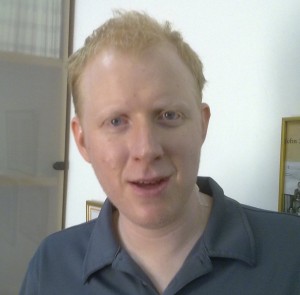
Dr. Rani Moran, from Tel-Aviv University, visited us last week and gave talk on mathematical modeling of visual search (title and abstract follow).
Accounting for benchmark RT distributions in visual search
Historically, visual search models were mainly evaluated based on their account of mean reaction times (RTs) and accuracy data. Recently, Wolfe, Palmer, and Horowitz (2010) demonstrated that the shape of the entire RT distributions imposes important constraints on visual search theories and can falsify even successful models such as Guided Search, raising a challenge to computational theories of search. Moran et al. (2013) met this important challenge by developing a novel search-model, Competitive Guided Search (CGS). The model is an adaptation of Guided Search, featuring a series of item-selection and identification iterations with guidance towards targets. The main novelty of the model is its termination rule: A quit unit, which aborts the search upon selection, competes with items for selection and is inhibited by the saliency map of the visual display. The model was successfully fitted to data from three classical search tasks that have been traditionally considered to be governed by qualitatively different mechanisms, including a spatial configuration, a conjunction, and a feature search, thus providing a unifying framework for visual search. More recently, Moran et al. (2015) examined the possibility that a parallel search model can account for these benchmark data. Towards that purpose, we developed a parallel model in which each item is represented by a diffusor and the different diffusors run in parallel and independently of each other. The search is self-terminating if a target is found, and otherwise terminates when a distractor triggers a quit unit. The model was endowed with ample flexibility to allow it to compete with the serial model: it allowed for different capacity regimes, for set-size dependent adjustment of the diffusion-thresholds, and for liberal search-termination policies. Consequently, the model had many more free parameters than CGS. Still, model-comparisons revealed that CGS was superior even prior to penalizing the parallel model for its increased complexity. I discuss the insights we gleaned, with respect to search mechanisms, by modeling RT distributions using these models.



